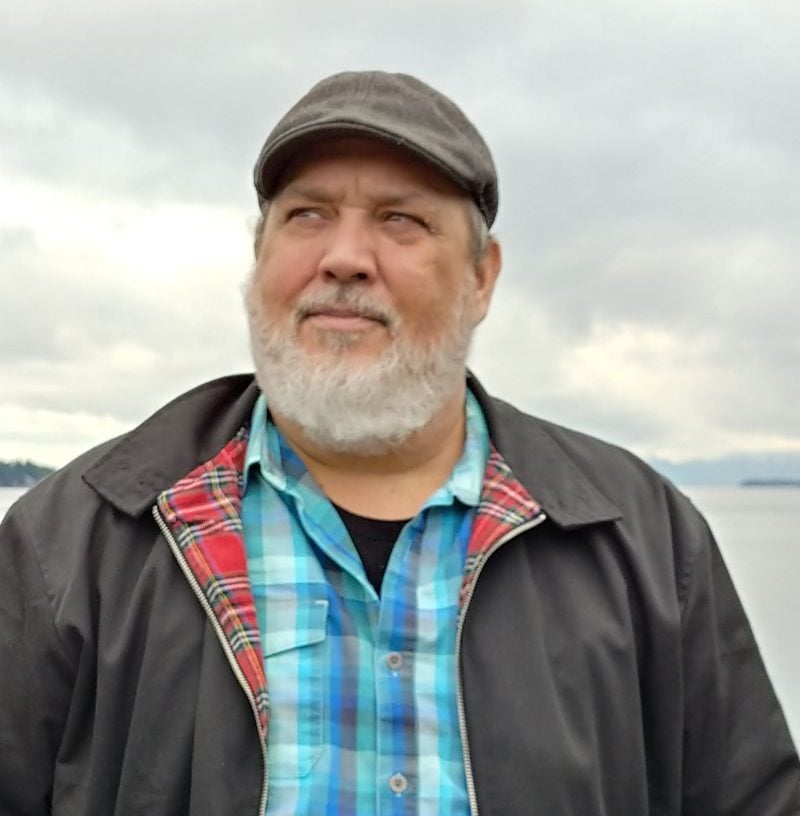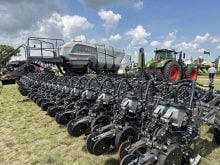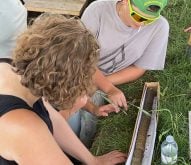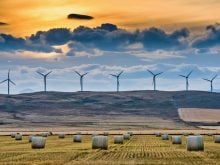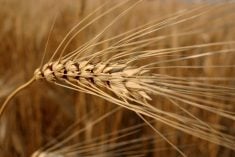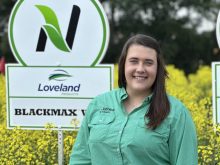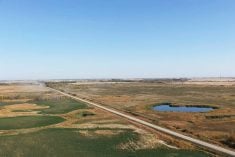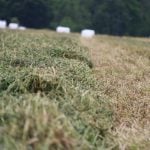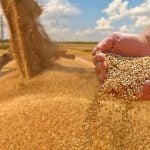The drought this year across the Prairies is a big reminder of the importance of moisture conservation. At the 2025 Ag in Motion outdoor farm show in Langham, Sask., several exhibitors aimed to help farmers address this urgent concern.
One of the first steps to improving water-holding capacity is understanding what factors control it. Jeff Schoenau, a University of Saskatchewan soil scientist, said two key soil properties play the biggest roles.
The basics
Read Also
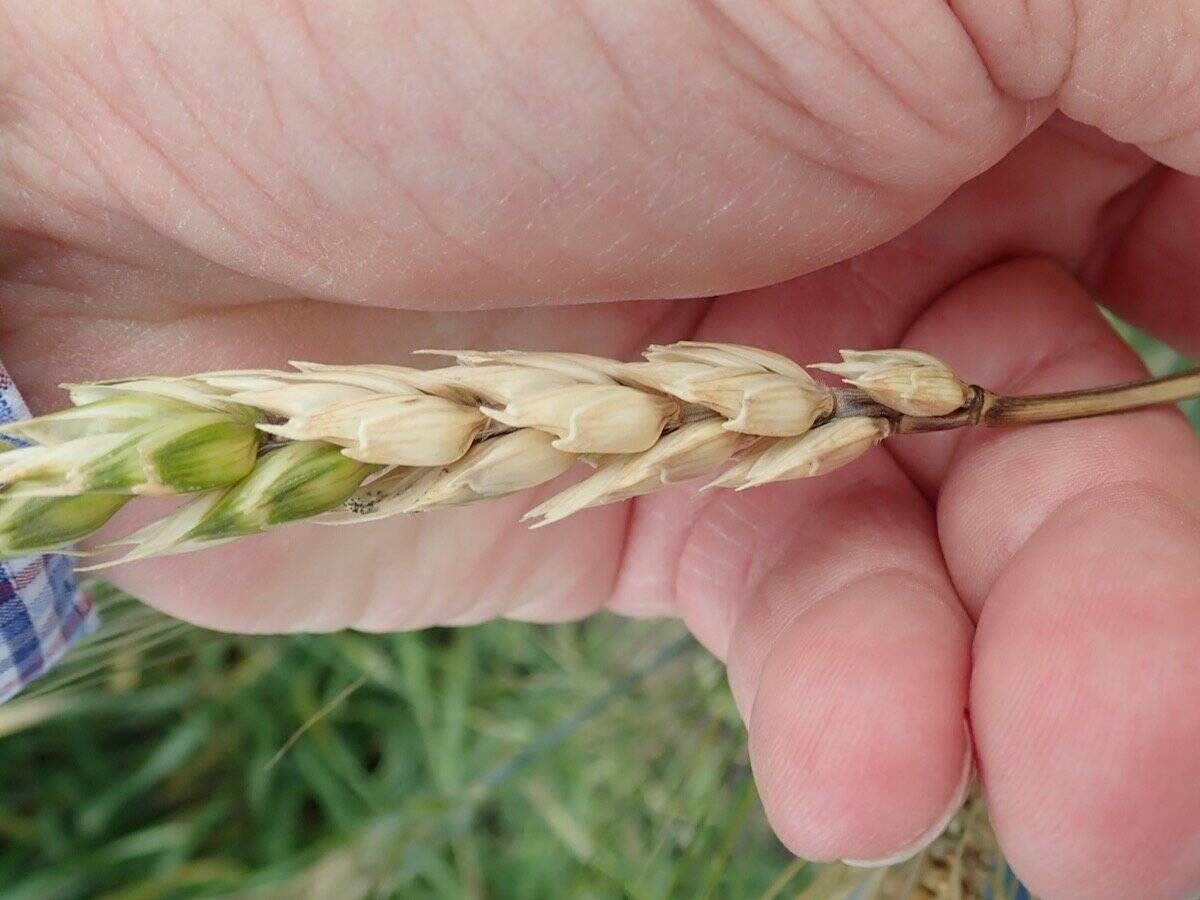
Fusarium head blight mycotoxin detector in the works
Prairie farmers and agronomists needing a more definitive process to detect fusarium infection in cereal grains, particularly barley, may get such a process out of research underway at the University of Saskatchewan.
“Water holding capacity of the soil is very much influenced by two things: the organic matter content and the texture, which is the percentage of sand, silt and clay,” said Schoenau. “If a soil has more organic matter and it has more clay, that’s going to increase the available water-holding capacity.”
Clay content, while important, can’t be changed, he explained. A foot of moist clay soil will hold two inches of available water, whereas if it’s a foot of moist sandy soil, it will only hold an inch, or even less if it has a very high sand content.
But water-holding capacity isn’t the whole story. Moisture conservation isn’t just about keeping water in the soil; it’s also about getting water into the soil, or infiltration.
“Things that influence infiltration, like having a surface residue, help promote water entry,” said Schoenau. “We also think about evaporative losses. If we don’t have standing stubble there, that increases the wind speed at the soil surface, and that increases the evaporation.”
He noted that Prairie farmers’ long-standing conservation practices have already helped, contributing to increased water holding capacity, improved infiltration and good soil structure.
“You have a good distribution of pores holding water and some that also hold air to make sure that the soil isn’t flooded or saturated,” he said.
Matching problems to products
While Schoenau focused on the fundamentals, Karthikeyan Narayanan, technical director with Cropland Analytics, zeroed in on how to identify problems and match them with solutions. Cropland Analytics didn’t have a booth at Ag in Motion this year, but we caught up with him at the Annelida Soil Solutions booth, one of the firms his company partners with.
Cropland Analytics operates a fully outfitted, professional lab in Tofield, Alta., testing the biological, physical and chemical aspects of soil.
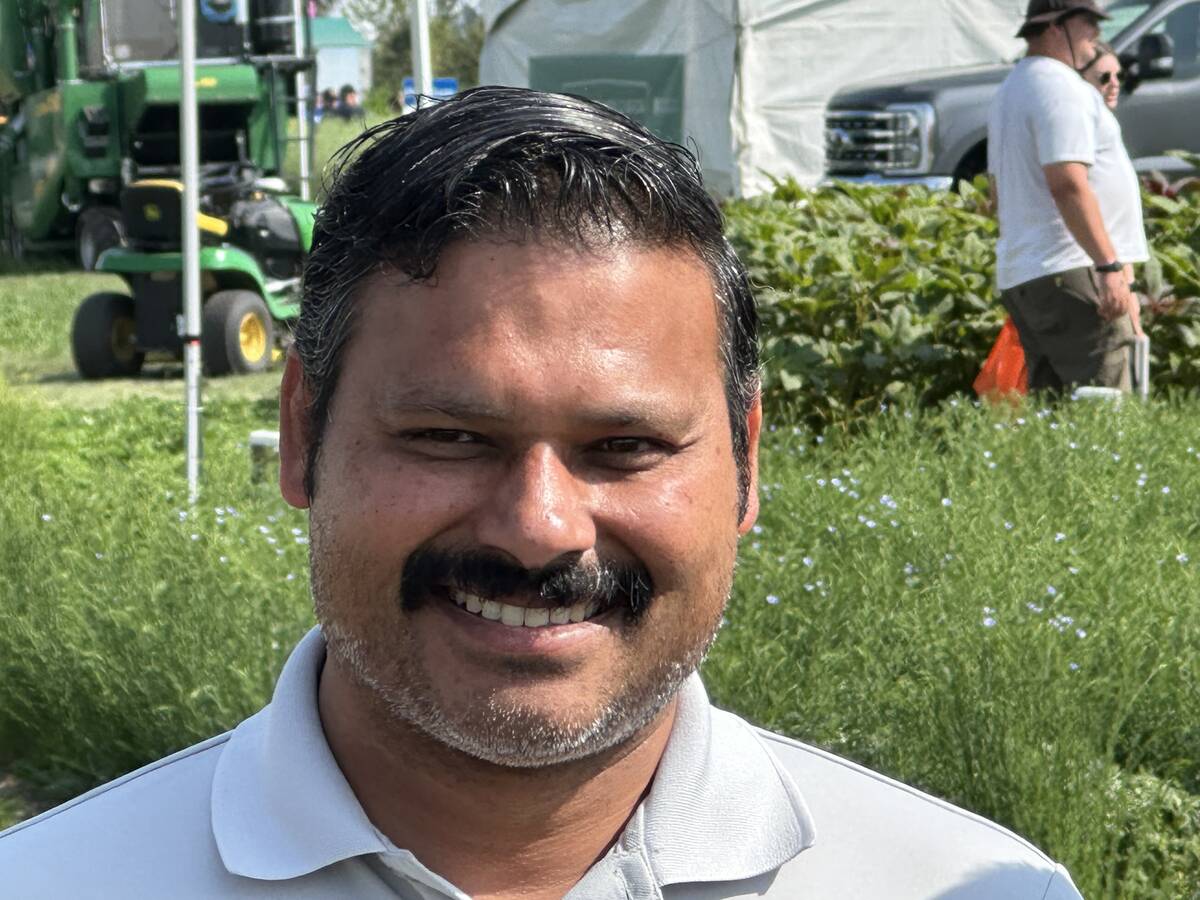
“The idea behind the lab is to identify the properties of the soil and to understand what’s inhibiting any of those water-holding capacities of the soil as a whole,” said Narayanan. “We do have products, and we do have solutions, but until we identify what the soil needs, it’s going to be very hard to promote one product.”
The business model for Cropland Analytics is based on partnerships with soil amendment companies. His main partners are Annelida and Johnson’s Regenerative.
“They have the solutions that align with what we find in our labs,” said Narayanan. “Ultimately, the farmer needs a solution, and that’s why we align with companies who can provide that solution.”
The partnerships represent a three-way street between Cropland, their partners and the farmer. And Narayanan insists the farmers are the big winners.
“With every test we’ve done and every recommendation we provided, our response rate is over 98 per cent. And that’s on-farm,” he said.
But while Cropland Analytics mainly recommends the products of their partners, an arm of their company is also developing products. Cropland Solutions focuses on developing products while keeping the lab independent to avoid conflicts of interest. The team is actively researching calcium-based products, addressing a common issue with gypsum: limited availability.
Narayanan pointed to one product they’ve designed that he says can boost calcium availability by 400–500 per cent. The product is applied directly in the furrow, targeting only the row rather than trying to amend the entire field. This approach keeps costs low — under $50 per acre. The product aims to improve the rhizosphere while enhancing water infiltration, root growth, phosphorus availability and overall biological activity. He says farmers are seeing immediate benefits, almost as if nitrogen had been added.
Farmers come first
But Narayanan said the main goal is not to sell products. It’s to help farmers. It’s a consultative process more than anything, and if one of his partners doesn’t have a solution, he’ll recommend a third party.
“If I don’t have a solution, but a competitor does, it’s always good if it benefits the farmer,” he said. “As long as they’re doing certain parts of the Annelida, Johnson’s, or Cropland program, it’s fine.”
Narayanan said that many of the water-holding issues he’s called to address fall into the same broad categories identified by Schoenau: soil texture and infiltration.
He noted that sandy soils benefit from organic matter to help retain moisture, while clay soils may hold water but not release it readily to plants. Infiltration problems, he said, can be worsened when fine-textured soils disperse during rainfall, leading to surface sealing, clogged pores and increased runoff.
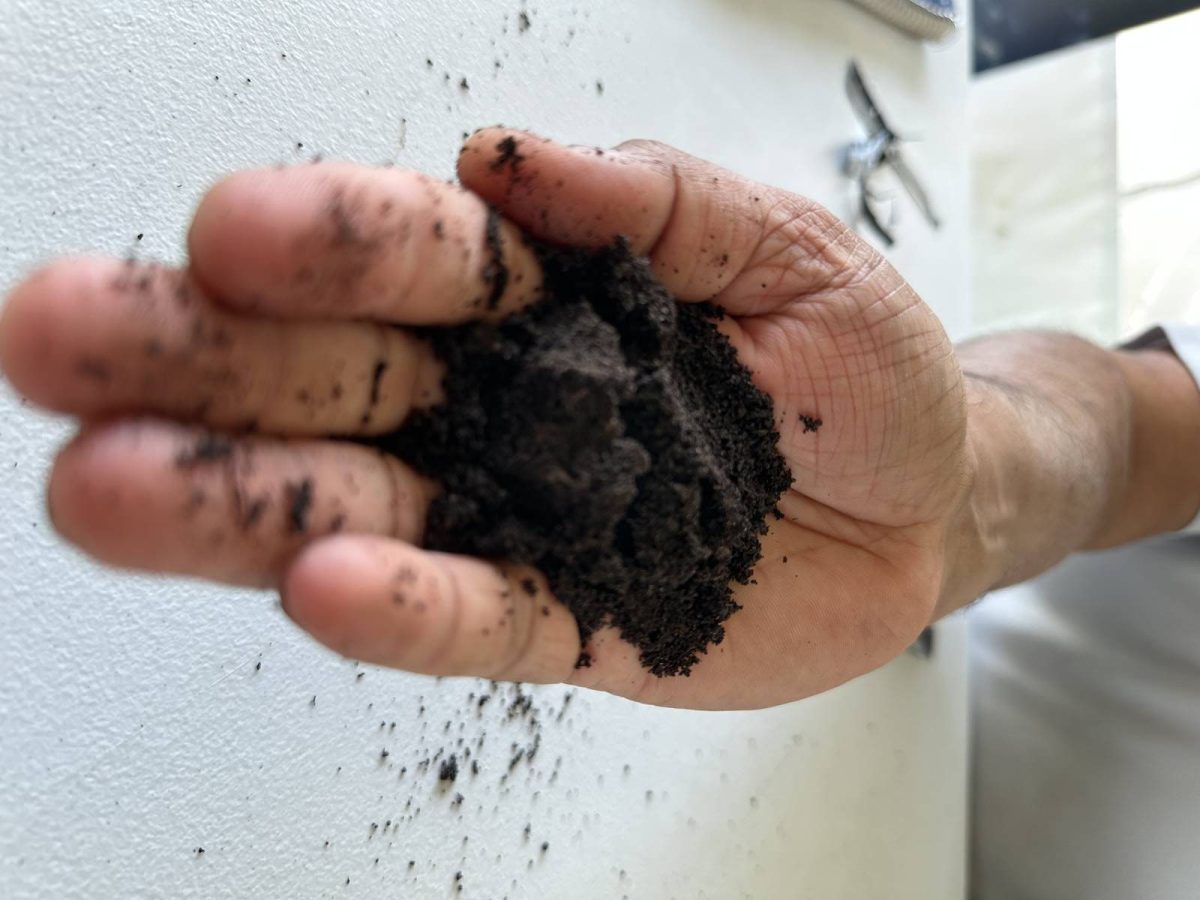
“So, you have more water runoff from the field than infiltration through the field,” he said.
High tillage or elevated sodium levels can make this worse, though calcium amendments can improve soil structure and help water move into the profile.
While too much tillage harms infiltration, the opposite extreme — continuous no-till — can create its own problem: compaction. Without tillage to break it up, compacted layers can persist and build over time, restricting root growth and water movement. Narayanan said lowering tire pressures by six or seven pounds per square inch can cut that compaction by as much as 15 to 20 per cent.
In his view, farmer awareness and management practices are just as important as any product he or his partners sell.
“There’s no way we can keep amending the soil if the farmer is using bad practices in the field,” he said. “If you want to get out of the hole, you have to stop digging first.”
Cover cropping debate
When asked about other methods for improving water holding capacity, like cover cropping, Narayanan said that while cover cropping will, over time, improve water holding capacity, farmers who are concerned about the water holding capacity of their soils are likely in dry areas — and adding extra mouths to feed when water is scarce isn’t the best idea.
“It’s not growing the cover crop as a problem. It’s about the water,” said Narayanan. “If your water rainfall is low, then what’s going to happen is your cover crop is going to pull that moisture out. So, the following crop won’t have that subsoil moisture.”
Not so fast, said Karlah Rudolph, president of SaskSoil, a farmer-led group promoting soil health and conservation in Saskatchewan.
“I’m in southwestern Saskatchewan, and I do not find that there is an issue with having a cover, even though we’ve been in five years of drought,” she said.
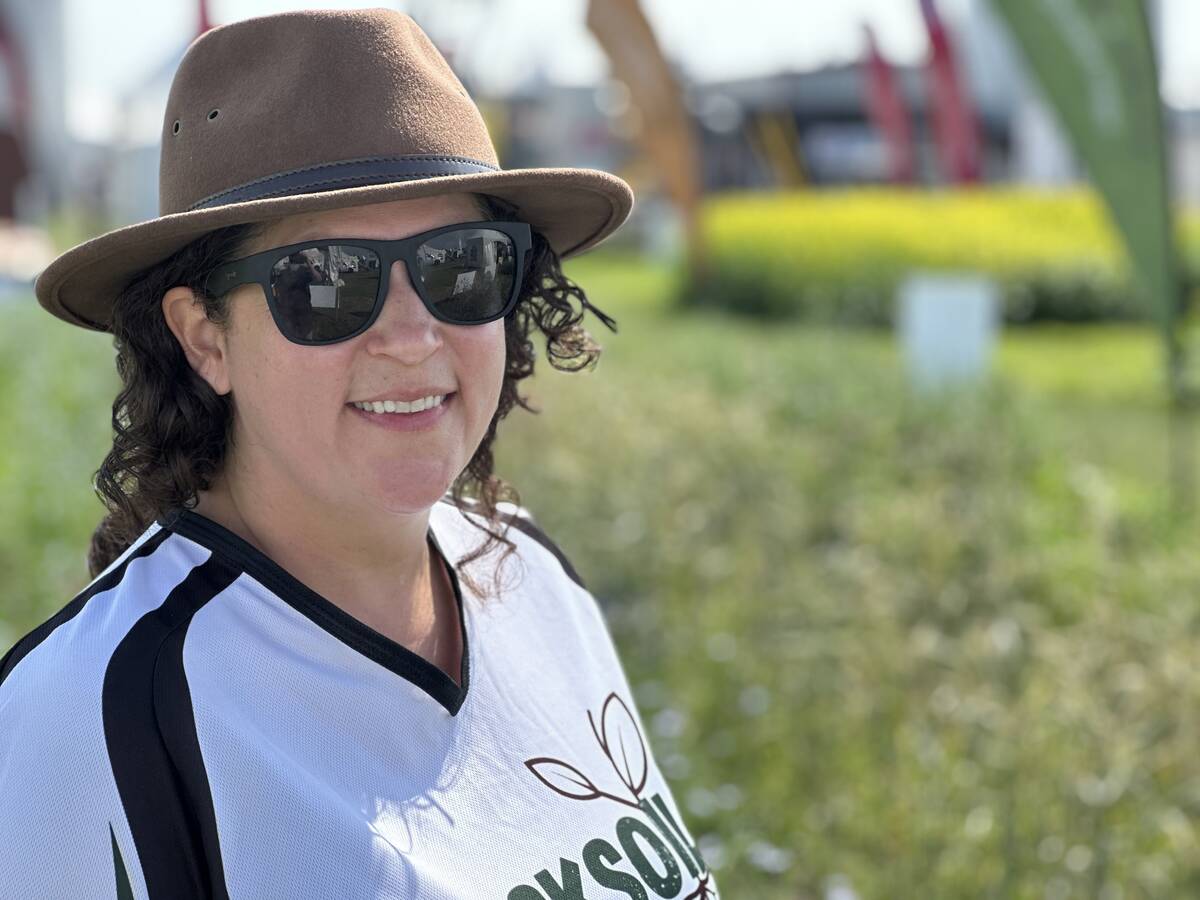
Rudolph farms with her family in Gravelbourg and south of Gull Lake, Sask., combining annual crops with forage and pasture. Her soil science background helped her see the role of cover crops and living roots in protecting soil structure and improving infiltration.
Because of those dry conditions, Rudolph has been closely examining whether cover cropping can work in southwestern Saskatchewan and she planted some crops on her farm to get some answers.
On one of her fields, she’s planted a monocrop system of red lentils.
“There wasn’t a thing growing on it in the spring. It’s as naked as can be,” she said. “I’m observing some visible wind erosion. I’m not very happy about that, but there’s absolutely no competition for the water.”
On another field, she had a hard red spring wheat crop that was underseeded with a low rate of Italian ryegrass and a low rate of sainfoin.
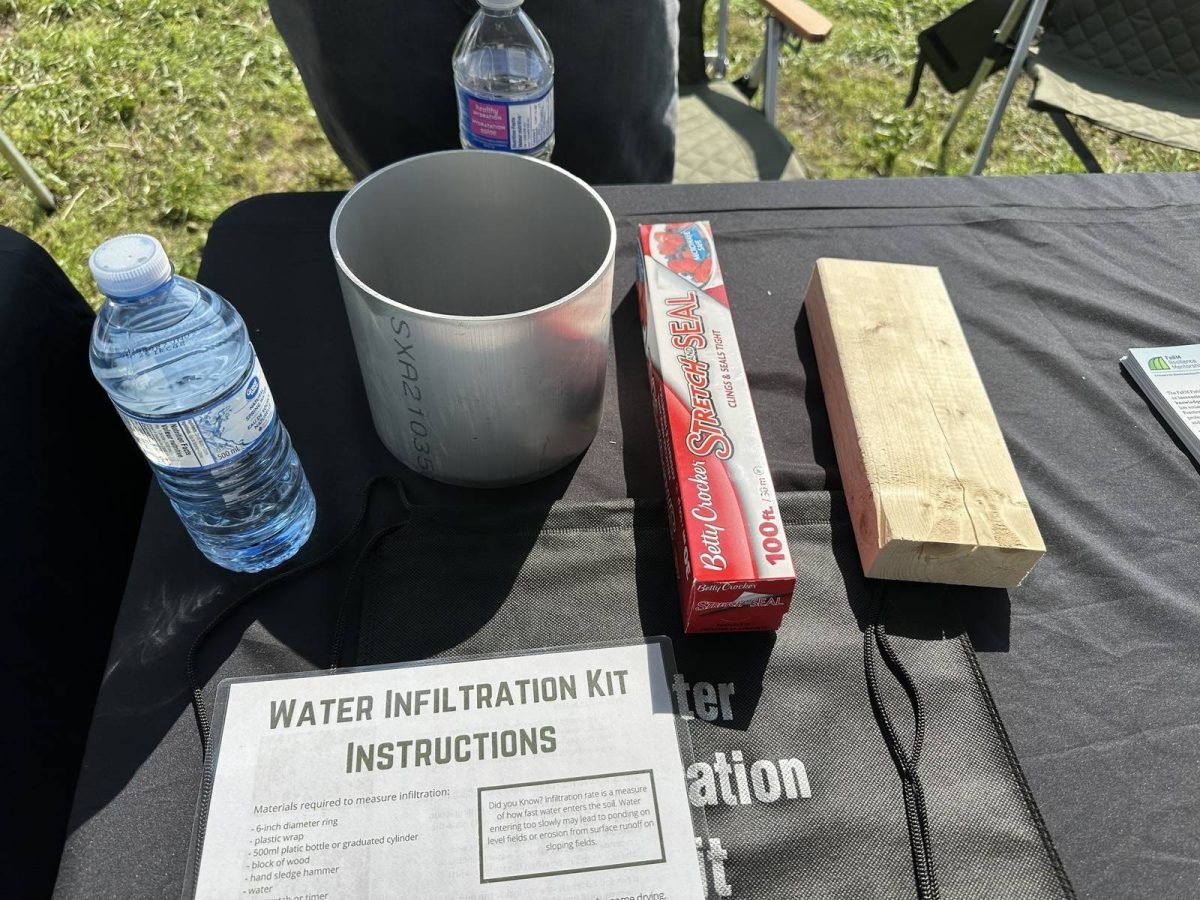
“Sainfoin is a perennial, and it came up in the spring. The Italian ryegrass overwintered, so I had roots at two depths. I had fibrous roots from the Italian ryegrass closer to the surface, and then I had this deep taproot from the sainfoin that was going down at depth.
On the red lentil field, she found that the moisture was closer to the surface, about two inches down. But when she dug where the Italian ryegrass had been planted, the ryegrass had used the water at the surface, and the moisture had moved further down the soil profile. But not by much, she said maybe an inch, and it was much wetter than the moisture level on lentils.
“The snow catch offered by high residue and a high infiltration rate far outweighs the issue of weed competition when it comes to moisture conservation,” she said.
Measuring the moisture
At their Ag in Motion booth, SaskSoil displayed a simple infiltration test kit consisting of a six-inch tube, a bottle of water, a roll of plastic wrap, a wooden block and a stopwatch — it’s exactly the kind of practical, low-cost, MacGyvered innovation you’d expect to see from a farmer-led, DIY group like SaskSoil.
However, just across the lane, Kyle Henderson, business manager for Crop Intelligence, offered a more high-tech option for understanding what’s going on beneath the surface — one perhaps more suitable for those gadget-loving farmers.
“This moisture probe goes one meter into the ground,” said Henderson.
Installed right after seeding, the probe reads initial soil moisture from 100 cm up to 10 cm depth. Combined with rainfall data from a weather station, the system calculates “water-driven yield potential” — how many bushels a crop can produce per inch of available water.
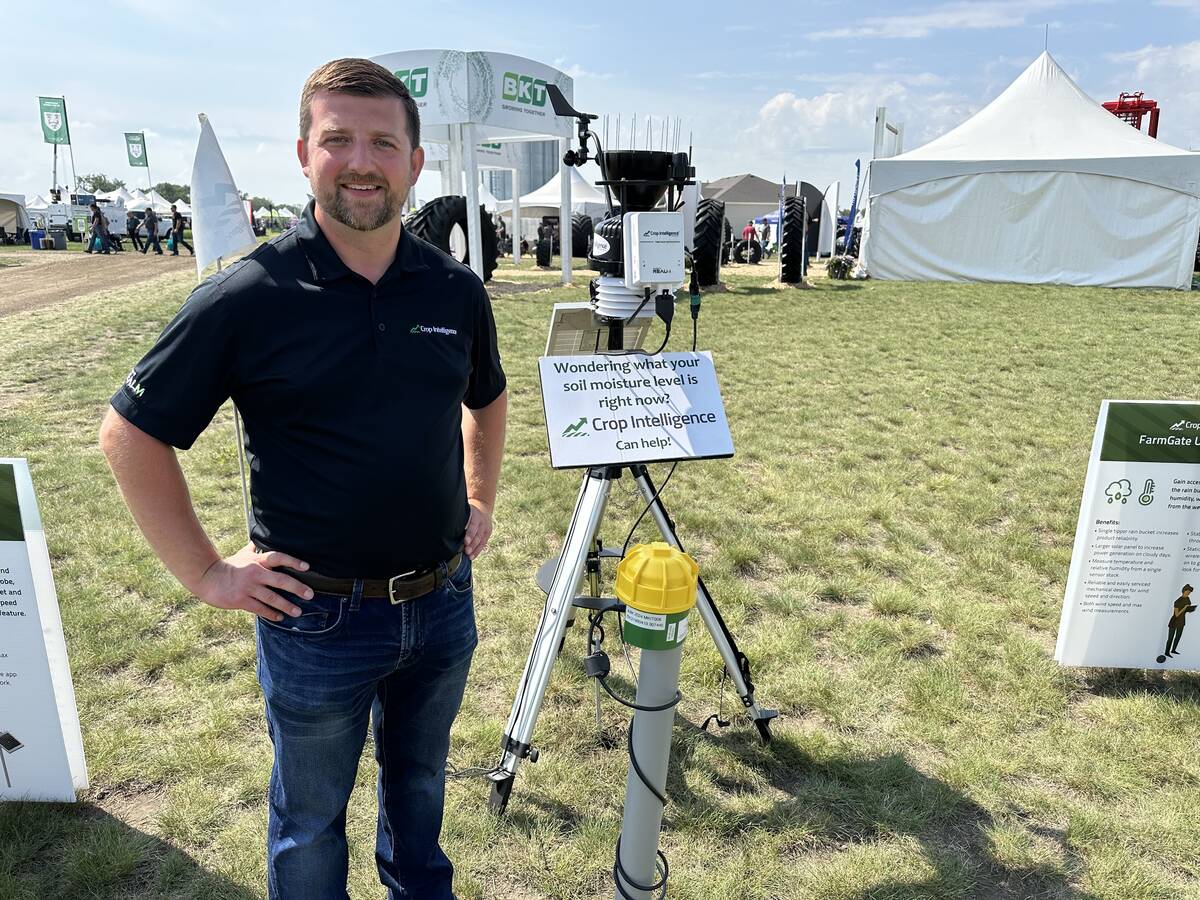
Farmers can also monitor infiltration in real time.
“If you get an inch of rain, does it actually equate to an inch of soil moisture?” Henderson said.
The tool’s data can help identify whether a soil’s holding capacity is limiting yields and guide management decisions throughout the season.
Shared success
From cover-cropping, conservation tillage and residue management to targeted amendments and soil monitoring, improving water-holding capacity is a multi-pronged effort. And for Narayanan, it’s also about the bigger picture.
“At the end of the day, as long as the farmer wins, the entire industry wins,” he said. “We can’t be shortsighted in our approach.”

